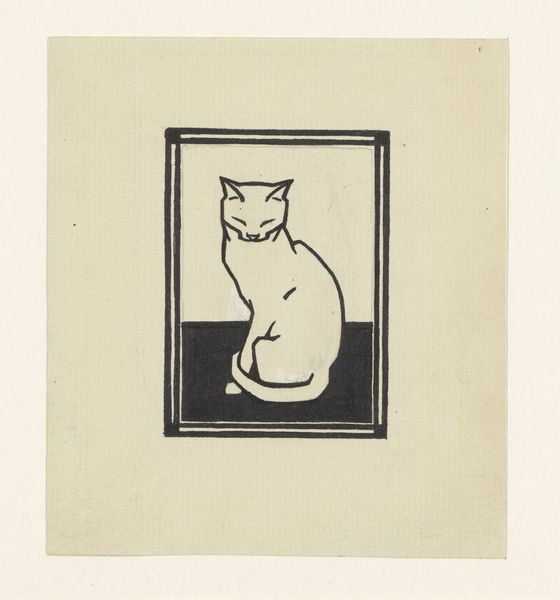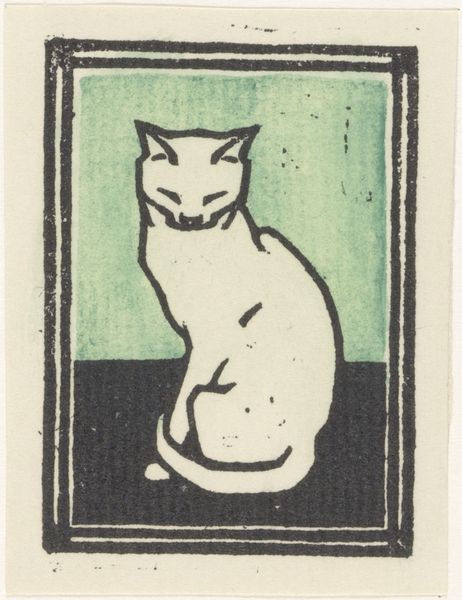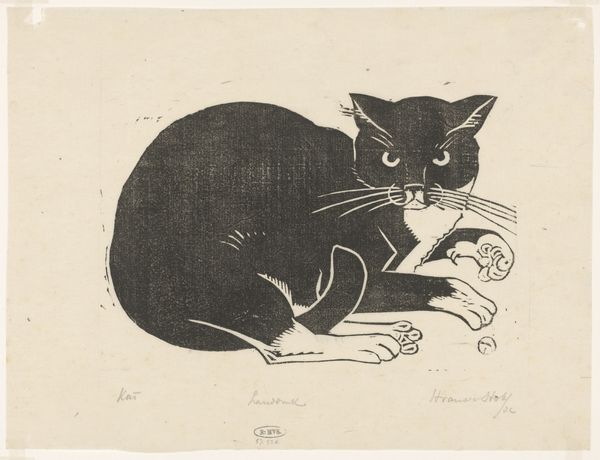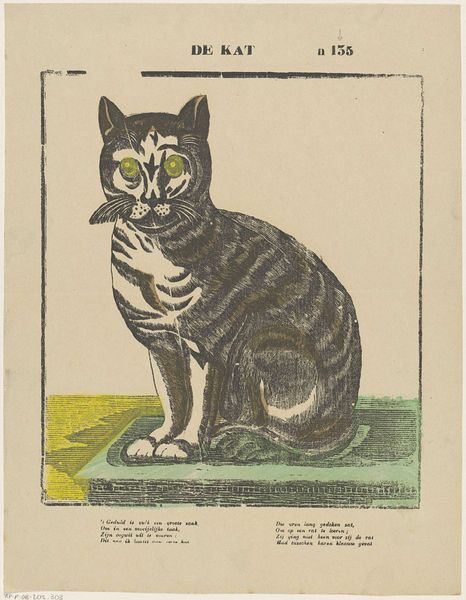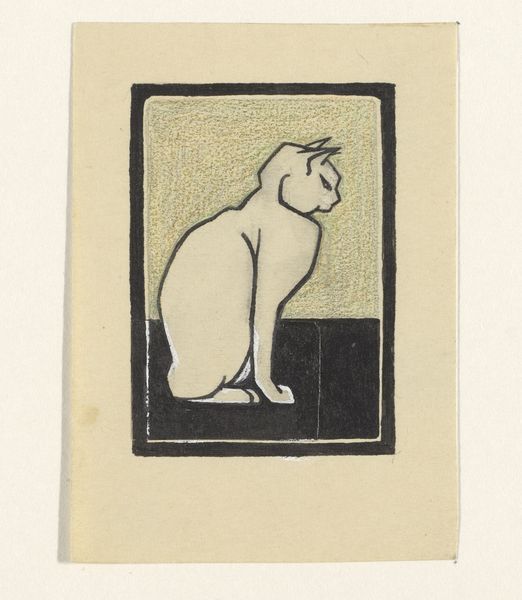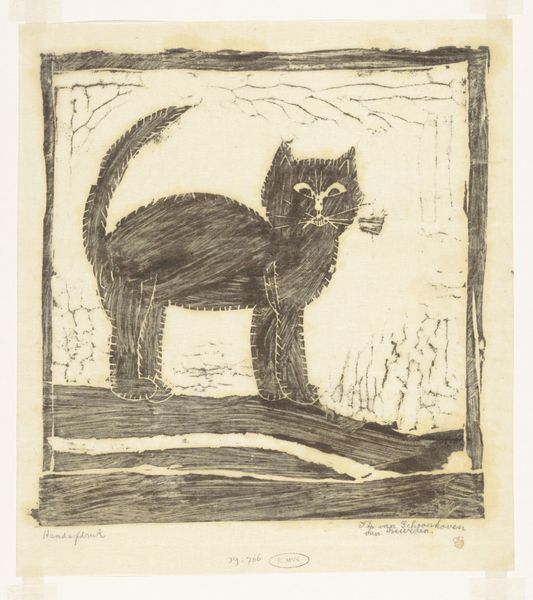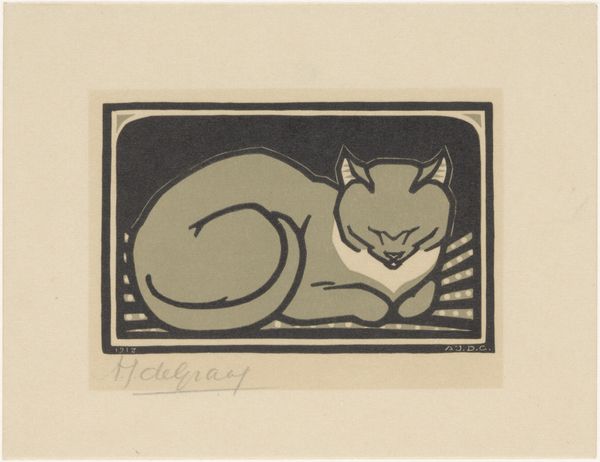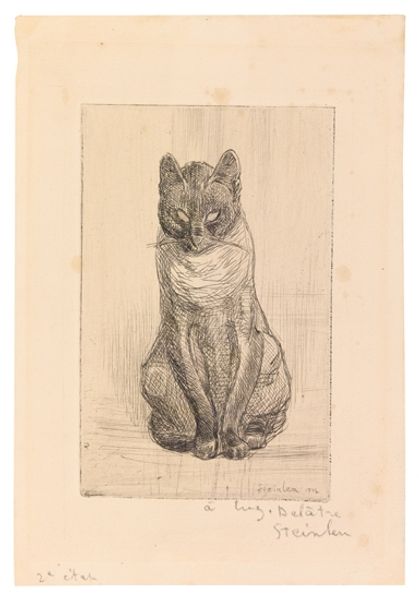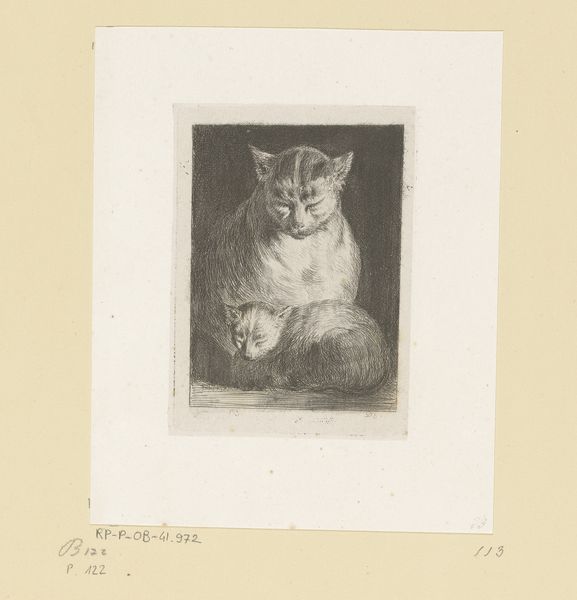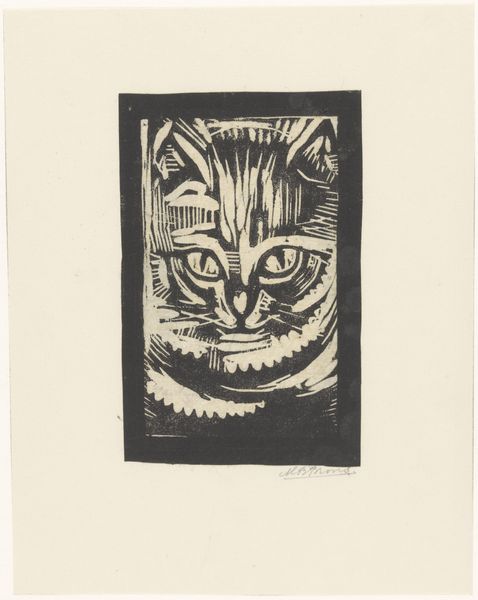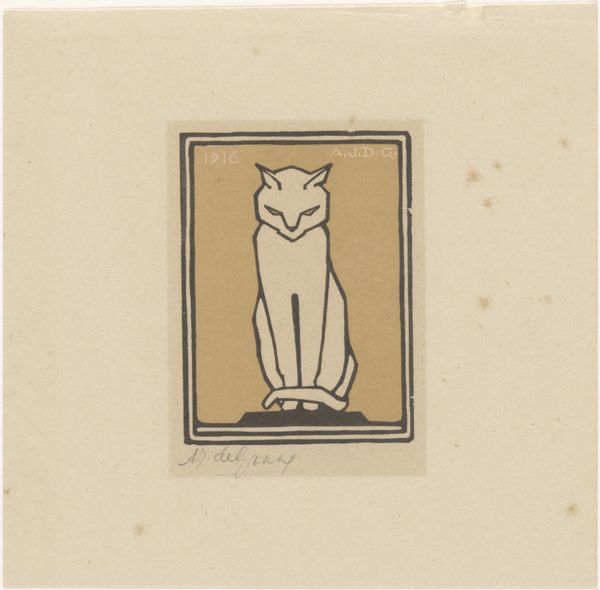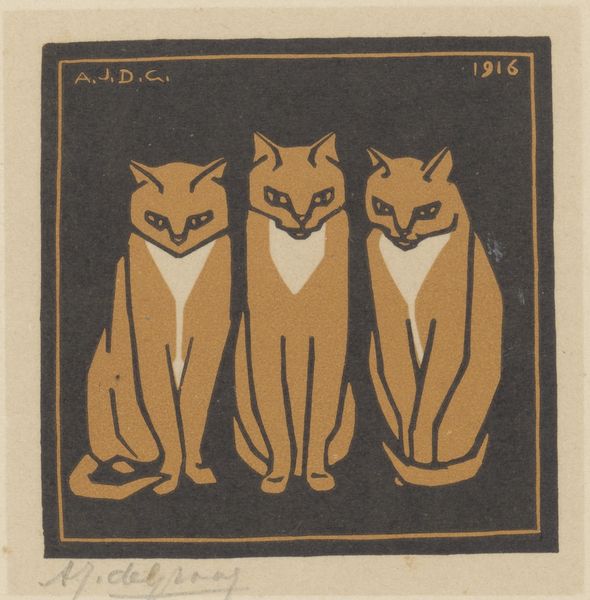
drawing, paper, ink
#
drawing
#
art-nouveau
#
caricature
#
figuration
#
paper
#
ink
#
geometric
Dimensions: height 130 mm, width 97 mm
Copyright: Rijks Museum: Open Domain
Curator: Isn’t it captivating? There's something so modern and minimal about this portrayal. Editor: You know, looking at it, I immediately thought "Bauhaus feline." It has this beautiful starkness, right? The simple lines, the contrasting black and white. Curator: Absolutely! This ink drawing on paper is "Kat," created by Julie de Graag in 1917. De Graag's work often demonstrates an awareness of the simplification of form we see in art nouveau while pushing towards the geometric abstraction gaining prominence. It's currently housed at the Rijksmuseum. The stylized geometric representation—it's almost like a proto-cubist cat. Editor: It's as if the artist captured the *idea* of a cat, not the literal reality. This isn't Whiskers curled up on the hearth. I mean, what does the artist's life look like while making these images, who will see this? Does it end up on a wall, or on some discarded sketch after they die? I love thinking about the ephemeral experience the artist had making something so, what, confident. Curator: Well, cats held symbolic weight in various cultures, often linked to independence, mystery, and the feminine divine. In a sense, de Graag may have tapped into this archetypal association, representing a liberated modern woman through the image of the cat. This also came in a period where many queer female artists explored these ideas more often. Editor: Interesting, the eyes, which almost look like stylized mask create this really unsettling sense of scrutiny; almost like, the feline in question sees more of me than I think. Maybe it really *is* a statement of self possession! Curator: It also makes you think about the socio-political elements emerging, of course. Think about the post WWI social climate. These sorts of stark portraits capture feelings and attitudes of artists moving on in difficult environments. Editor: Agreed. In the end it isn’t *just* a pretty rendering. So many questions hide beneath this illustration, what a powerful statement! Curator: Definitely gives you something to chew on beyond the surface, right? It makes us look at the role and social-cultural positioning of De Graag as a artist in society. Editor: Exactly. You look at a drawing like this and you see not just art, but a whole world of silent questions rippling beneath the surface.

